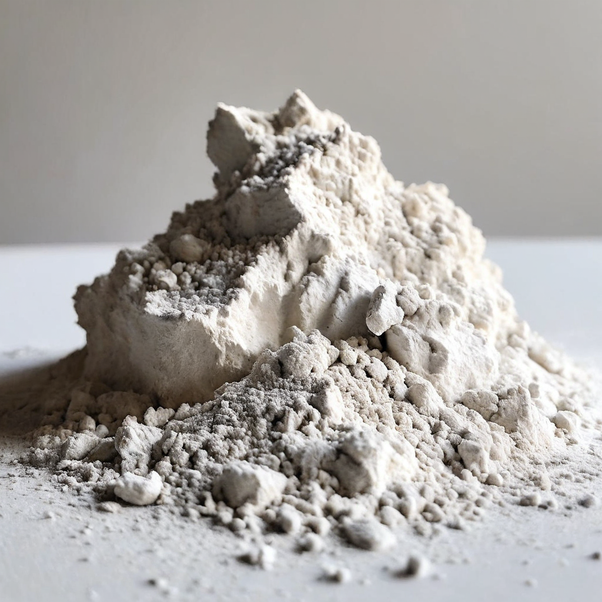
Those pesky fleas and ticks can turn playtime into a nightmare for your furry friend. These little bloodsuckers not only cause itchy bites but can also transmit diseases. While traditional flea and tick medications work wonders, some pet owners prefer a more natural approach.
This article will explore: natural flea and tick prevention for dogs. We’ll discuss the effectiveness of each approach, safety considerations, and tips to keep your pup parasite-free.
Why Go Natural?
There are several reasons why pet owners might choose natural flea and tick prevention:
- Concerns about chemicals: Some traditional medications contain chemicals that can be harsh on dogs, especially puppies, pregnant dogs, or dogs with sensitive skin.
- Preference for natural solutions: Some pet owners simply prefer a more natural approach to pet care.
- Effectiveness against certain pests: While traditional medications target a broad range of pests, some natural methods may be more effective against specific types of fleas or ticks.
Also Read: 10 Common Pet Behavior Problems and Solutions: Decoding Your Furry Friend
Important Considerations Before Going Natural
While natural methods can be a great option, it’s crucial to consider these points:
- Effectiveness: Natural methods may not be as effective as traditional flea and tick medications, especially in areas with heavy infestations.
- Frequency: Natural methods often require more frequent application compared to monthly medications.
- Safety: Always research and choose natural ingredients safe for dogs. Some essential oils, for instance, can be toxic if ingested.
- Consulting your vet: Always discuss any new flea and tick prevention method with your veterinarian, especially if your dog has pre-existing health conditions.

Natural Flea and Tick Repellents:
This section will explore various natural repellents and how to use them safely:
- Essential Oils: Certain essential oils, like citronella, lemongrass, cedarwood, and lavender, have natural insect-repellent properties. Important Note: Essential oils can be toxic to dogs if used incorrectly. Never apply them directly to your dog’s skin. Instead, dilute them in a carrier oil like coconut oil and use a spray bottle to mist your dog’s fur (avoiding eyes and mouth) or bedding. Consult a veterinarian for proper dilution ratios specific to the chosen oil.

- Apple Cider Vinegar: The acidic nature of apple cider vinegar is thought to repel fleas and ticks. You can dilute apple cider vinegar with water and use it as a spray on your dog’s fur or add a small amount to their water bowl (consult your vet first for the appropriate amount).
- Brewer’s Yeast: Brewer’s yeast, rich in B vitamins, may make your dog less appealing to fleas and ticks. You can sprinkle a small amount on your dog’s food daily.
Natural Flea and Tick Control Strategies:
Beyond repellents, these strategies can help manage existing infestations and prevent future ones:
- Regular Brushing: Regular brushing removes fleas, ticks, and their eggs from your dog’s fur. Use a flea comb for added effectiveness. Immediately dispose of any fleas or ticks you find in a sealed container.

- Diatomaceous Earth (DE): DE is a powder made from fossilized algae that can dehydrate and kill fleas and ticks. Food-grade DE is safe for dogs when used correctly. Sprinkle a thin layer of DE on your dog’s bedding, carpets, and around your home (avoid contact with eyes and lungs). Vacuum thoroughly after a few days.
- Cedar Chips and Sprays: The scent of cedar is a natural flea and tick repellent. You can place cedar chips around your yard or use a cedarwood spray on your dog’s bedding (avoid direct contact with the dog).
- Herbal Supplements: Several herbal supplements, like garlic or neem oil, are marketed as natural flea and tick repellents. However, the effectiveness of these supplements is not always well-established. Consult your veterinarian before giving your dog any herbal supplements.
Also Read: 05 Homemade Dog Food Recipes for Skin Allergies: Itchy Relief for Your Furry Friend!
Environmental Control:
Fleas and ticks thrive in warm, humid environments. Taking steps to control these conditions in your home can significantly reduce the risk of infestation:
- Vacuum regularly: Vacuuming carpets, furniture, and pet bedding removes fleas, ticks, and their eggs. Dispose of the vacuum bag immediately after use.
- Wash bedding in hot water: Wash your dog’s bedding and any other fabrics they come in contact with in hot water (at least 130°F) to kill fleas and ticks.
- Treat your yard: There are several natural yard treatments available to control fleas and ticks. These often involve spraying a solution containing beneficial nematodes or cedar oil around your yard.
Important Note: Always follow the manufacturer’s instructions carefully when using any yard treatment.
Working with Your Veterinarian:
No matter which flea and tick prevention method you choose, it’s crucial to work with your veterinarian to develop a plan that’s right for your dog. Here’s how your vet can help:
- Assess your dog’s risk: Your vet can assess your dog’s individual risk factors for fleas and ticks based on their breed, lifestyle, and environment. Factors like living in a wooded area or having frequent dog park visits can increase your dog’s risk.
- Recommend a prevention plan: They can recommend a combination of natural and traditional methods to create a comprehensive prevention plan. For example, if you live in an area with a mild flea problem, your vet might suggest using a natural repellent along with a monthly topical medication during peak flea season.
- Monitor your dog’s health: Schedule regular checkups to monitor your dog’s health and ensure the chosen prevention method is effective. If you notice any signs of fleas or ticks, like excessive scratching, scabbing, or lethargy, consult your vet immediately.

Additional Tips:
Here are some additional tips to keep your pup itch-free:
- Maintain a healthy diet: A healthy diet rich in essential fatty acids and omega-3s can help keep your dog’s skin and coat healthy, making them less susceptible to flea bites and tick infestations.
- Check your dog regularly: Get in the habit of checking your dog’s fur for fleas and ticks daily, especially after spending time outdoors. Focus on areas like the ears, paws, armpits, and base of the tail, where fleas and ticks like to hide.
- Treat your home immediately: If you discover fleas or ticks in your home, take immediate action to treat your carpets, furniture, and bedding. Wash all washable items in hot water and vacuum thoroughly. Consider hiring a professional pest control service for severe infestations.
- Be patient: Natural flea and tick prevention methods may take some time to show results. Be patient and consistent with your chosen methods. It may take some trial and error to find what works best for your dog.
Living with a dog is a joy, but keeping them healthy and free of pests is essential. By exploring natural flea and tick prevention methods and working with your veterinarian, you can ensure your furry friend stays happy and itch-free.
Further Resources:
- The American Kennel Club (AKC) offers a helpful guide on natural flea and tick prevention: [Natural Flea & Tick Prevention: Home Remedies] fleas/)
- The Environmental Protection Agency (EPA) provides information on safe flea and tick control methods for pets and your home: EPA’s Pets and Pesticides webpage
Remember, this article provides a general overview of natural flea and tick prevention methods. It’s always best to consult with your veterinarian for personalized advice specific to your dog’s needs. With a little planning and effort, you can keep your dog happy and healthy all year round!
FAQs: Natural Flea and Tick Prevention for Dogs: Frequently Asked Questions
Here are some frequently asked questions about using natural methods to keep your dog flea and tick-free:
Q. Are natural flea and tick repellents safe for my dog?
Many natural repellents can be safe for dogs when used correctly. However, some caution is necessary. Essential oils, for instance, can be toxic if ingested by your dog. Never apply essential oils directly to your dog’s skin. Always dilute them in a carrier oil like coconut oil and avoid their eyes and mouth. Consult your veterinarian before using any essential oil on your dog, and always use a pet-safe dilution ratio.
Certain herbs and supplements marketed for flea and tick prevention may also have side effects. It’s crucial to research any product before giving it to your dog and consult your veterinarian for guidance, especially if your dog has any pre-existing health conditions.
Q. How often should I use natural flea and tick repellents?
The frequency of application will vary depending on the chosen product. Some homemade sprays with apple cider vinegar or diluted essential oils may need to be reapplied daily, especially after swimming or playing in the rain. Other natural products, like brewer’s yeast or certain herbal supplements, may be given daily but work more systemically to deter fleas and ticks.
Q. Are natural flea and tick repellents as effective as traditional medications?
Generally, natural repellents are not as effective as prescription flea and tick medications. Traditional medications often contain synthetic chemicals that kill fleas and ticks on contact and provide long-lasting protection. Natural repellents may only repel fleas and ticks or have a shorter window of effectiveness.
However, natural repellents can still be a valuable tool, especially for dogs with sensitive skin or in areas with mild flea and tick problems. They can also be used alongside traditional medications for added protection.
Q. What is the best natural flea and tick repellent for dogs?
There’s no single “best” natural flea and tick repellent. The effectiveness can vary depending on the severity of the flea and tick problem, your dog’s individual needs, and the specific product used. Some pet owners find success with a combination of approaches, like using a natural spray and adding brewer’s yeast to their dog’s food.
Consulting your veterinarian is the best way to determine the most suitable natural flea and tick prevention plan for your dog.
Q. How can I get rid of fleas and ticks in my home if I’m using natural methods?
Natural methods can be effective for managing a mild flea infestation in your home. Here are some steps you can take:
- Wash all washable bedding and fabrics in hot water (at least 130°F).
- Vacuum carpets, furniture, and pet areas thoroughly, paying close attention to crevices and corners. Dispose of the vacuum bag immediately after use.
- Sprinkle diatomaceous earth (DE) on carpets, furniture, and around the edges of rooms. Leave it for a few days, then vacuum thoroughly. Important Note: Choose food-grade DE and avoid contact with eyes and lungs.
- Consider using natural flea sprays containing ingredients like cedarwood oil or citrus extracts. Always follow the manufacturer’s instructions carefully.
For severe infestations, professional pest control services may be necessary.
Q. Is there anything I can do to my yard to prevent fleas and ticks?
Yes, there are several natural ways to make your yard less hospitable to fleas and ticks:
- Keep your lawn mower short and free of debris. Fleas and ticks thrive in tall grass and damp areas.
- Remove leaf litter and overgrown vegetation around the perimeter of your house.
- Consider planting natural flea and tick repellents like rosemary, lavender, or citronella around your yard.
- There are also natural yard treatments available containing beneficial nematodes. These microscopic worms kill fleas and ticks in the soil.
Q. What are the signs of fleas and ticks on my dog?
Common signs of fleas and ticks on your dog include:
- Excessive scratching and biting
- Visible fleas or ticks on your dog’s fur
- Red, irritated skin
- Hair loss
- Black specks (flea dirt) on your dog’s fur or bedding
- Lethargy or loss of appetite
If you notice any of these signs, consult your veterinarian immediately. Early detection and treatment are crucial to prevent complications from flea and tick bites.
Q. Can I use natural flea and tick prevention methods on puppies?
Some natural methods may be safe for puppies, but it’s crucial to consult your veterinarian first. Puppies
Q. Can I use natural flea and tick prevention methods on puppies? (continued)
Puppies have more sensitive skin than adult dogs and may be more susceptible to irritation from certain essential oils or other natural ingredients. Your veterinarian can advise you on safe and effective natural flea and tick prevention methods for your puppy. In some cases, they may recommend a low-dose prescription medication specifically formulated for puppies.
Q. What are some of the limitations of using natural flea and tick prevention?
As discussed earlier, natural flea and tick prevention methods have some limitations:
- Effectiveness: Natural repellents may not be as effective, especially in areas with heavy flea and tick infestations.
- Frequency: Natural methods often require more frequent application compared to monthly medications.
- Safety: Always research and choose natural ingredients safe for dogs. Some essential oils can be toxic if ingested.
- Time Commitment: Natural methods may take more time and effort to see results compared to traditional medications.
Q. Should I completely avoid traditional flea and tick medications?
Not necessarily. Traditional flea and tick medications are highly effective and can be a lifesaver for dogs living in areas with heavy infestations or with compromised immune systems. However, if your dog has sensitive skin or you prefer a more natural approach, there are ways to incorporate natural methods alongside traditional medications for added protection.
Always discuss your dog’s specific needs with your veterinarian to determine the best flea and tick prevention plan for them.

